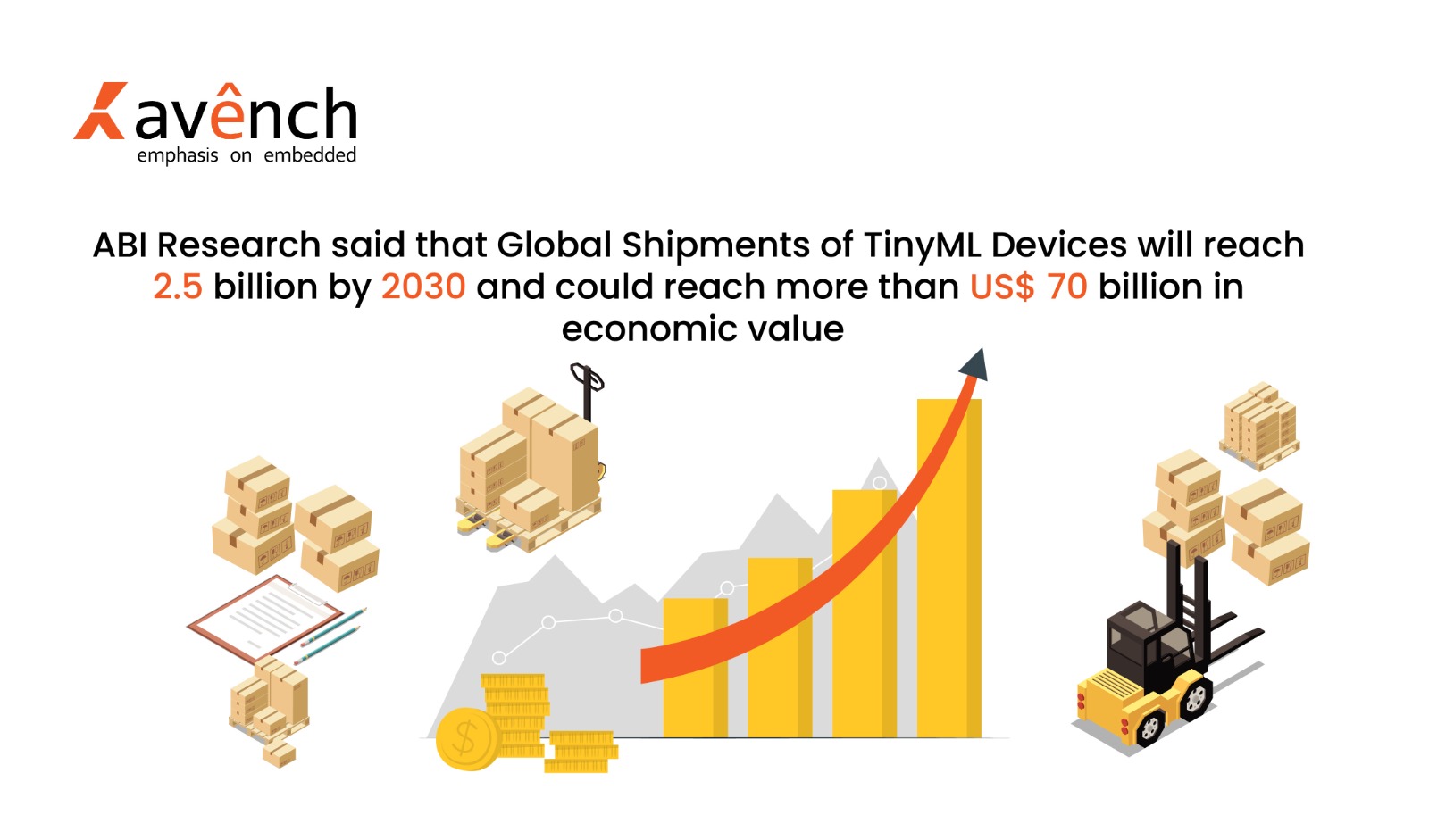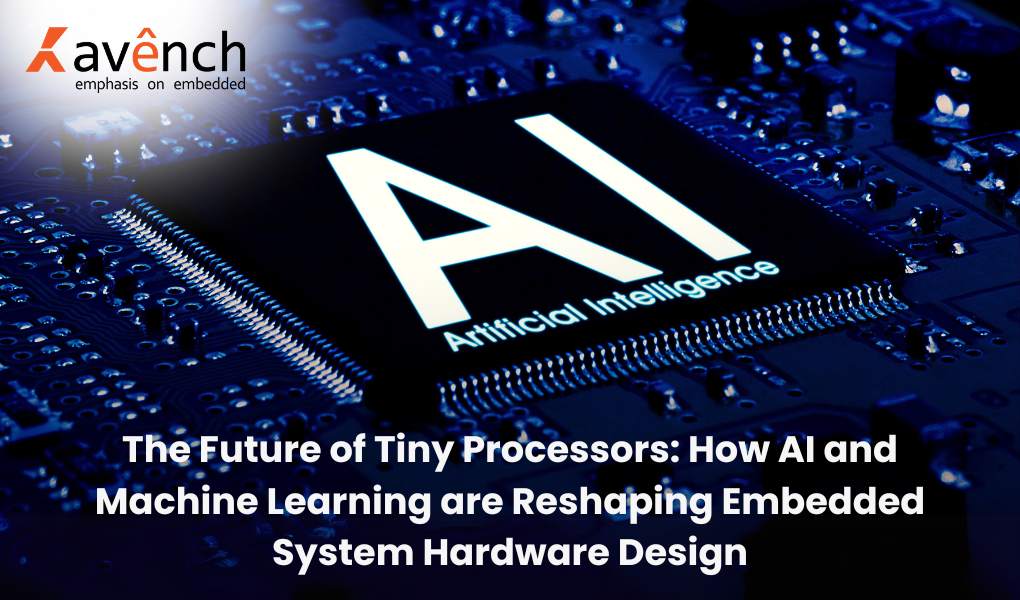The world around us is getting smarter. From smartphones to thermostats, devices are constantly collecting and analyzing data to automate tasks and improve productivity. This trend is primarily driven by the rise of artificial intelligence (AI) and machine learning (ML) with embedded system hardware design. However, the processing power required for complex AI algorithms is high compared to supercomputers. Once moved to simple control tasks, smaller processors are going through a transformation driven by AI and ML.
Embedded systems – small computers built into larger machines – are the workhorses of the modern world. They are responsible for everything from filling your car with fuel to loading your camera. Traditionally, these systems relied on simple, low-performance microcontrollers. But the increasing demand for smart devices “at the edge” – where data is collected and processed before being sent to the cloud – is pushing the limits of embedded system hardware design.
The Rise of TinyML
Enter TinyML, a subfield of ML designed specifically for very low-power microcontrollers. TinyML algorithms are smaller, faster, and require significantly less power than traditional ML models.

This allows them to run on devices with limited resources, paving the way for a new generation of embedded intelligence. The impact of TinyML on embedded product design is multifaceted. Here are some key factors that will make a difference:
- Processor Architectures: New processor architectures arise from the need for more complex algorithms. These algorithms are optimized for specific ML tasks, such as convolutional neural networks (CNNs), which are commonly used for image recognition. Compared to traditional general-purpose processors, it performs better when power consumption is lower.
- Hardware speed: Many installed systems now include hardware speeds dedicated to specific ML tasks. These accelerators can greatly improve the speed and efficiency of running TinyML models, allowing faster data processing at the edge.
- Memory Optimization: Memory is a valuable resource in embedded systems hardware design. The TinyML algorithm is designed to be memory efficient, requiring less storage for the image itself. In addition, on-chip memory and other hardware optimizations can further reduce memory requirements.
- Power consumption: One of the biggest challenges in TinyML is ensuring efficient power consumption. New designs such as low-power transistors and dynamic voltage scaling have been used to reduce power consumption while maintaining power output
The Benefits of On-Device Intelligence in Embedded system Hardware design
The combination of AI and ML in embedded systems hardware design offers many advantages:
- Real-time processing: By processing data locally, TinyML eliminates the need to send data to the cloud for analysis. This allows for real-time decision-making and faster response times, which are important for applications such as industrial automation and predictive maintenance.
- Improved privacy and security: Putting data processing on the device can increase privacy and security by reducing the amount of data transmitted and stored in the cloud This is especially important for information-consuming applications of the necessary solutions.
- Reduced bandwidth consumption: Moving data processing to the edge reduces the amount of data transmitted over the network. This can be very useful for devices with limited bandwidth or those that operate in remote locations.
- Low overall costs: By eliminating the need for powerful cloud servers and reducing reliance on persistent Internet connections, TinyML can help reduce the cost of systems with intelligent embedded controls and functionality overall.
Applications of TinyML in Embedded system Hardware design
The potential applications of TinyML are vast and expanding rapidly. Here are some real-world examples:
- Predictive maintenance: TinyML algorithms can analyze sensor data from industrial devices to predict possible failures. This allows for preventative maintenance, reduces downtime and saves costs. 8
- Smart wearables: TinyML can enable wearables such as activity detection, fall detection, and personal health monitoring, all while conserving battery life.
- Smart Homes: Embedded system hardware design including TinyML can automate tasks in smart homes, such as changing lighting based on occupants or detecting abnormalities in energy in the use of.
- Industrial Automation: TinyML algorithms can be used for image recognition on factory floors to identify defects in products or to monitor manufacturing processes to improve productivity.
- Environmental monitoring: Small powered sensors can be installed in remote locations to monitor environmental factors such as air quality or noise pollution, allowing for data collection and processing analysis in real time.
Challenges and the Road Ahead
While TinyML holds great promise, there are still challenges to overcome. The main challenge is the limited computing resources available on these small processors. Efficient algorithms in embedded system hardware design are required to achieve the desired performance with minimal energy consumption. Additionally, the development tools and software ecosystem for TinyML are still evolving, requiring additional flexibility to make it easier for developers to build and deploy TinyML applications Despite these challenges, the future looks bright for TinyML. As processor technology improves and the TinyML algorithm becomes more sophisticated, we may see embedded product development life cycle systems that are smarter and more efficient.
Avench is one of the leading embedded product design companies in usa. For any sales queries, contact us at +1 (775) 404-5757. You can also email us at sales@avench.com. We will be happy to assist you.

